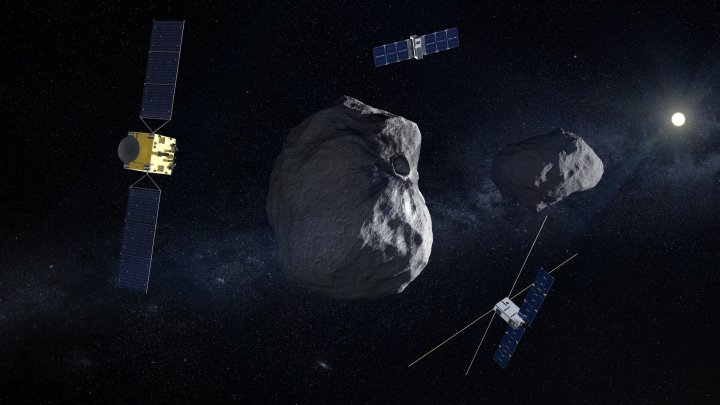
This week, space agencies from around the world came together to figure out how to respond if a large asteroid were to strike Earth. As part of the Planetary Defense Conference, experts spent several days planning out their response to a fictional scenario in which an asteroid struck Europe and destroyed an area 60 miles wide.
The simulated asteroid was between 35 and 700 meters in diameter and was detected by the Pan-STARRS survey and subsequently tracked by the International Asteroid Warning Network. One of the challenges of potentially dangerous asteroids is that there could be limited concrete information about their size and exact path. Observing such an incoming asteroid would involve a lot of uncertainty, and it could take months before space agencies could be sure if an asteroid would definitely impact the planet and where it would land.
The available options for deflecting an asteroid approaching Earth could make small adjustments to its course to nudge it away from the planet, but only if there was sufficient advance warning. In this case of this scenario, there wouldn’t have been enough time to deflect the asteroid and it “impacted” an area of the Czech Republic near the border with Germany.
To understand how to manage such a situation, the researchers looked at disaster management for natural disasters such as hurricanes, floods, and earthquakes. This year, the impact of COVID-19 was a part of the discussion as well, looking at the need for research and technology in order to protect diverse populations. One issue to consider in such a scenario is not only how to conduct an emergency response in a big city, for example, but also in more isolated rural areas.
Another topic was the need for continuous planning and preparations for the long term, and not just thinking in terms of the months or year ahead. “A big lesson was that we need more long-term planning on how we can spot, track and ultimately mitigate potentially dangerous asteroids,” says Detlef Koschny, Head of ESA’s Planetary Defence Office in a statement. “Simply thinking in annual or bi-annual planning cycles, which is how many budgets at public institutions are set, is not good enough to address a risk that has been hundreds of millions of years in the making.”
Editors' Recommendations
- Hubble discovers over 1,000 new asteroids thanks to photobombing
- SpaceX shares awesome rocket imagery from Starship flight
- See planets being born in new images from the Very Large Telescope
- Asteroid impacted by spacecraft is reshaped like an M&M ‘with a bite taken out’
- Astronomers are figuring out what causes incredibly bright flashes in space




